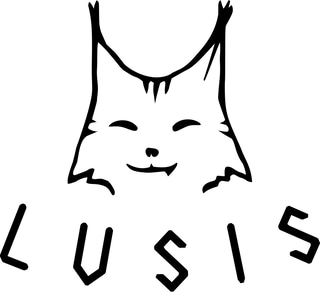Celtic
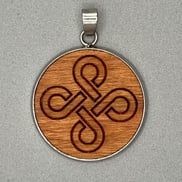

Bowen Knot
The Bowen's Knot, also known as the heraldic knot, is a stylized, symmetrical design consisting of a square-shaped looped pattern. While not originally exclusive to Celtic culture, it appears in Celtic knotwork due to its geometric beauty and symbolic resonance. In Celtic tradition, knot designs are deeply symbolic, often representing eternity, interconnectedness, and the continuity of life. The Bowen’s Knot, with its endless looping design, mirrors these themes. Like other Celtic knots, it has no clear beginning or end, symbolizing the cyclical nature of existence—life, death, and rebirth. Though simpler than other intricate Celtic knots, its clean and balanced form embodies the harmony of opposing forces and the interweaving of the physical and spiritual realms. Historically, the Bowen’s Knot also served decorative and protective purposes, used in carvings, jewelry, and manuscripts. While its name is often linked to later heraldic traditions and the Bowen family in Wales, its presence in Celtic-inspired art underscores its universal symbolism. Today, it continues to be appreciated both for its aesthetic and its deeper meanings of unity, strength, and eternal connection.
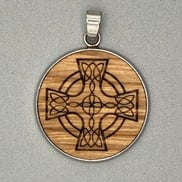

Celtic Cross
The Celtic Cross is a powerful symbol that blends ancient Celtic spirituality with Christian faith. It features a traditional cross with a ring surrounding the intersection, symbolizing unity and eternity. Before the arrival of Christianity, similar cross-circle designs were used by the Celts to represent the sun, life cycles, and nature's balance. The ring may also have symbolized eternity or the wheel of life, key themes in Celtic belief. With the spread of Christianity in Celtic regions, the symbol was adapted to represent the Christian cross, with the circle now interpreted as a halo or a sign of God's eternal presence. This fusion helped early missionaries connect Christian teachings to existing Celtic beliefs. Celtic Crosses became especially prominent in stone high crosses, which were often elaborately carved with knotwork and biblical scenes, especially in Ireland and Scotland between the 8th and 12th centuries. Today, the Celtic Cross is a strong emblem of Celtic heritage, seen in art, jewelry, gravestones, and tattoos. Though it has been misused in some modern contexts, its original meaning remains rooted in faith, continuity, and cultural identity.
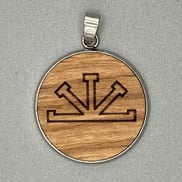

Imbolc
Imbolc is an ancient Celtic festival that marks the beginning of spring, traditionally celebrated on February 1st. It honors Brigid, the Celtic goddess of fertility, healing, and poetry, who was later syncretized with Saint Brigid in Christian tradition. Imbolc comes from the Old Irish word meaning "in the belly," referring to the pregnancy of ewes and the return of fertility to the land. The festival symbolized the end of winter’s harshness and the renewal of life, as the first signs of spring—like longer days, budding plants, and newborn animals—began to appear. It was a time for lighting fires and candles, representing hope, warmth, and the sun’s growing strength. Rituals often included offerings to Brigid, home blessings, and the weaving of Brigid’s crosses from rushes or straw, which were placed in homes for protection. Imbolc was also a time of cleansing and preparation for the agricultural season ahead. Today, Imbolc is still celebrated by neo-pagans, Wiccans, and those honoring Celtic traditions, serving as a reminder of nature’s cycles and the enduring power of renewal, light, and feminine energy.


Solomon's Knot
The Solomon's Knot is an ancient symbol found across many cultures, including Celtic tradition, where it is often associated with eternity, unity, and the interconnectedness of life and time. Though not originally Celtic, it was adopted into Celtic art due to its intricate, interwoven design, which resonates with the Celtic emphasis on the cycles of nature and the endless flow of existence. In Celtic symbolism, the knot represents the eternal continuum of life, death, and rebirth, much like other Celtic knots that have no beginning or end. It is sometimes interpreted as a symbol of wisdom and protection, fitting with its name—linked to the biblical King Solomon, who was revered for his wisdom, though this connection likely came later through cultural blending. The knot's design—two interlaced loops—may also signify dualities in balance, such as the spiritual and material worlds or masculine and feminine energies. Found in Celtic stone carvings, jewelry, and illuminated manuscripts, the Solomon's Knot served as both decoration and a metaphysical emblem. While interpretations vary, within Celtic culture it remains a symbol of enduring unity, spiritual insight, and the unbreakable threads that bind all existence.


Tree of Life
The Tree of Life is a powerful and ancient symbol in both Celtic and Germanic cultures, representing the interconnectedness of all life, balance, and eternity. In Celtic tradition, it is known as Crann Bethadh, symbolizing the connection between heaven, earth, and the underworld. The Celts believed that trees were sacred beings, embodying wisdom and protection. The Tree of Life’s branches reach into the heavens, its trunk rests in the earthly realm, and its roots extend into the underworld—creating a bridge between the three worlds. Similarly, in Germanic (Norse) mythology, the Tree of Life is represented by Yggdrasil, the immense ash tree that connects the nine realms of existence. Yggdrasil is the cosmic axis, holding the universe together and serving as a pathway for gods, humans, and other beings. It is also associated with fate, life cycles, and divine knowledge. In both cultures, the Tree of Life embodies growth, rebirth, and the eternal cycle of nature. It serves as a reminder of humanity’s deep relationship with nature and the spiritual world. Its presence in ancient carvings, jewelry, and manuscripts shows its enduring significance as a symbol of strength, wisdom, and unity.
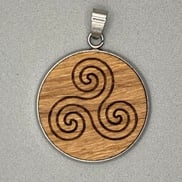

Triskeles
The Triskele, also known as the Triskelion, is a prominent symbol in Celtic culture consisting of three interlocking spirals or curved legs radiating from a central point. Found in ancient Celtic art, especially in Ireland, Brittany, and Scotland, the Triskele dates back to the Neolithic and Bronze Ages, but it became especially significant in Celtic spirituality. The number three held deep meaning for the Celts, symbolizing balance, motion, and the interconnectedness of life. The Triskele is thought to represent various triplicities important in Celtic belief, such as land, sea, and sky; birth, death, and rebirth; or mind, body, and spirit. The spirals’ motion suggests eternal movement and growth, reflecting the natural cycles of the world and spiritual evolution. In some interpretations, the Triskele is linked to solar energy, female power, or the triple goddess—maiden, mother, and crone—representing stages of life. It was often carved on stones, jewelry, weapons, and sacred sites. Today, the Triskele remains a powerful symbol of Celtic identity and spirituality, embraced in modern paganism, art, and tattoo culture. It continues to represent harmony, cycles, and the sacred power of threes in life and nature.

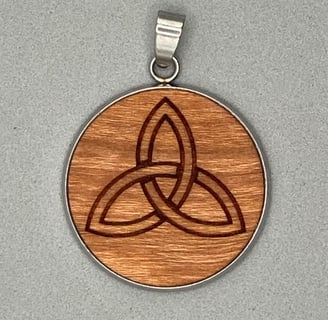
Triquetra
The Triqueta is a symbol consisting of three interlocking arcs or points, forming a triangle. It has ancient roots and is widely recognized in Celtic and Norse cultures, as well as in early Christian symbolism. The name Triqueta comes from the Latin word "tri" meaning three and "queta" meaning corner, referring to the three points or corners of the shape. This symbol is often interpreted to represent concepts of unity, eternity, and the cyclical nature of life. In Celtic tradition, the Triqueta is commonly associated with the triple goddess, symbolizing the three stages of a woman's life: the Maiden, the Mother, and the Crone. It is also seen as a symbol of the connection between earth, water, and sky, or life, death, and rebirth. In Christian contexts, the Triqueta has been used to represent the Holy Trinity – the Father, the Son, and the Holy Spirit. The Triqueta is often used in jewelry, tattoos, and artwork, embodying a sense of spiritual harmony and interconnectedness. Its timeless nature makes it a powerful emblem of balance, protection, and spiritual growth across different cultures and belief systems.
